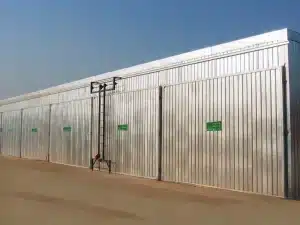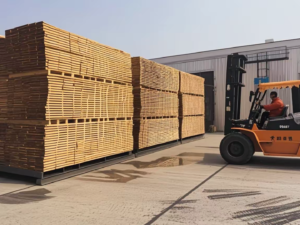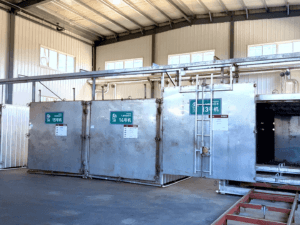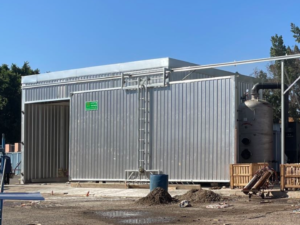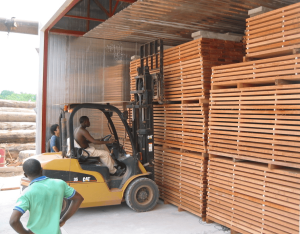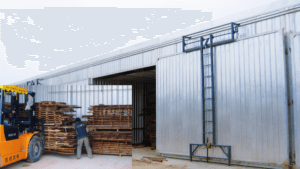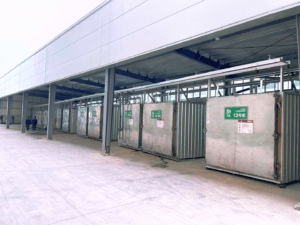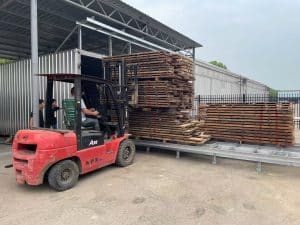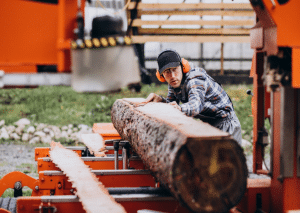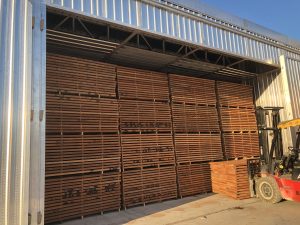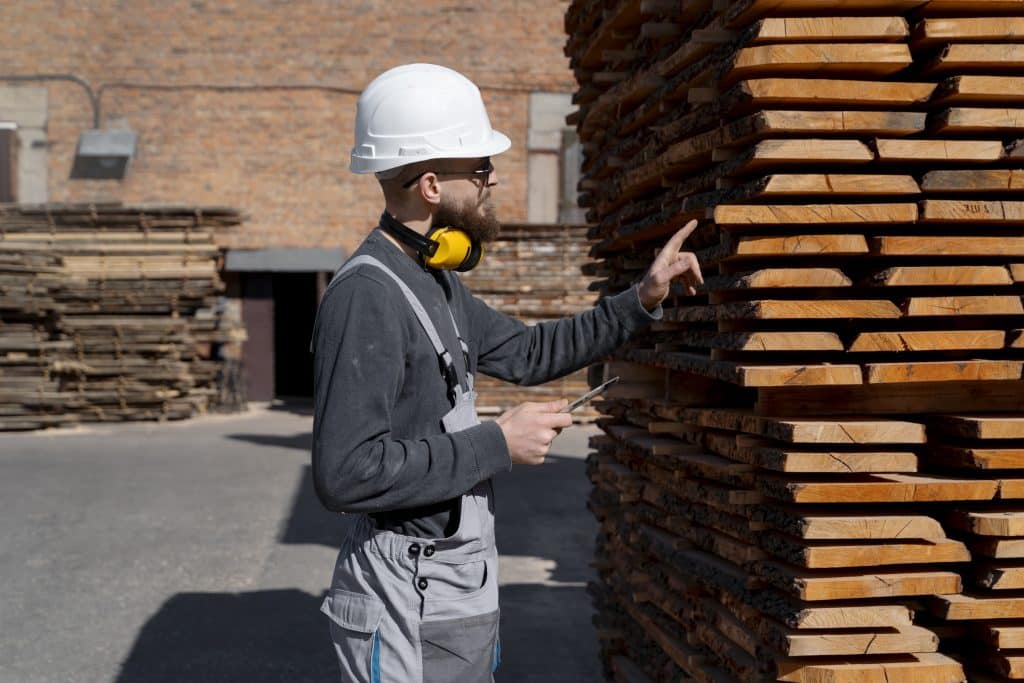
The wood drying kiln industry plays a vital role in the Kenya, contributing significantly in the drying kiln for lumber drying process. The ever-growing demand for high-quality and reliable wood processing solutions and lumber drying kilns necessitates understanding key factors when searching for a wood kiln close to home. Explore more at?Tech Drying.
1. The Importance of Wood Drying Kilns
Wood kilns are essential in the timber industry, specifically for drying lumber before it is processed further or used in various applications. The drying helps in reducing moisture content, enhancing product quality, and preventing defects like warping and decay. By properly drying wood, not only is the structural integrity of the lumber maintained, but energy efficiency is also significantly enhanced.?
2. Different Types of Wood Drying Kilns
Understanding the different types of wood drying equipment available is crucial. Conventional wood drying equipment use a combination of heat and airflow to remove moisture content gradually. Softwood drying kilns are specialized for maintaining the essential properties of softwoods during the drying process. On the other hand, Dehumidification kiln thermal modification kilns provide both drying and heat treatment in one structure, enhancing wood attributes such as durability and resistance to decay.?
3. Features to Look to Purchase Dry Kiln For lumber
When choosing a lumber drying kiln, consider features like energy efficiency, temperature control, and loading capacity. Most importantly, the kiln’s capability to achieve uniform drying across batches without defects should be prioritized. Also, consider a kiln’s technological compatibility and its accessories, which can influence the drying process’s effectiveness and operational costs. Explore our conventional drying kiln.?
4. Cost Considerations
Cost is inevitably a vital factor influencing dry kilns for lumber. The price of kilns can vary dramatically based on size, type, and technology of lumber kilns for sale. While investing in a higher-end kiln may seem steep initially, long-term savings on energy and time can offset the initial expenditure. Analyzing the cost-benefit aspect regarding operational efficiency and maintenance could provide significant dividends later.?
Estimated Costs of Different Types of Wood Kilns in the Kenya.?
Type of Kiln? | Average Cost Range? |
Conventional Drying Kiln (with chamber)? | Starting from $20000? |
Softwood Drying Kiln (with chamber)? | Starting From $20000? |
Dehumudication Kiln (with chamber)? | Starting from $30000? |
5. Availability and Location of wood drying kiln
Proximity to a kiln matters for logistic ease and minimizing transportation costs. To meet demands adequately, many manufacturers are now expanding their networks to key forest states in the Kenya. providing convenient access to top-notch wood kiln facilities.?
6. Local hardwood tree species in Kenya and the drying tips for them:
Mahogany:?
Prevent surface hardening and cracking by using moderate kiln temperatures (≤65°C), gradual humidity reduction, and end-sealing. Option for slow, staged drying: start at 40-50°C with 85-90% humidity, then gradually increase temperature while lowering humidity. Aim for a final moisture content of 8-10%, with a 2-3% moisture gradient tolerance. Allow post-drying seasoning for 2-4 weeks to relieve stress.?
African Wenge:?
Prioritize low-temperature, long-duration drying to avoid severe cracking (start at 30-35°C, max 65°C). Use strict humidity control (≤5% reduction per stage) and thick end-sealants. Extend preheating and balancing phases to ensure uniform moisture loss (target 6-8% MC, ≤2% gradient). Natural air-dry for 12-18 months if kiln drying isn’t an option, with regular mold checks and proper ventilation. Always verify moisture uniformity before machining.?
7. Impact of China’s Manufacturing on the Kenya Market
Recent industry shifts indicate a rising trend of Chinese manufacturers exporting wood drying equipment to the Kenya., offering competitive pricing and cutting-edge features. This phenomenon broadens the spectrum of available options for Kenya buyers, reinforcing the market with advanced technological solutions. To read reviews and cases click here.?
8. Challenges Faced by the Kenya. Wood Drying Kiln Industry
Despite the advantages, the Kenya wood kiln sector is met with several challenges, including high operational costs, stringent regulatory requirements, and the need for continuous lumber drying kiln upgrades to remain competitive in a globalized market. Addressing these issues is paramount to sustaining industry growth. But TechDrying offers premium and high quality wood drying kiln equipment along with valuable solutions.?
9. Future Prospects in Wood Kiln Technology
With technological advancements, the future of wood kilns looks promising with prospects such as AI integration for improved drying efficiencies and predictive maintenance, as well as IoT technologies for real-time monitoring and optimization.?
10. Supporting Local Economy and Industry
Choosing kilns from local suppliers not only supports the Kenya economy but fosters community-building within the industry. Collaboration among local stakeholders can drive innovation and sustainable practices, leading to a more resilient market.?
Key Takeaways?
The wood drying kiln industry remains pivotal in the Kenya, significantly impacting the lumber refining process. While the economic and technological influences of Chinese manufacturers provide competitive options, balancing cost, efficiency, environmental impact, and local support is essential. The future trajectory of this industry hinges on innovation and sustainability, aimed at fulfilling domestic needs while supporting global ecological standards.?
Frequently Asked Questions?
1. What are the main types of wood kilns used in the Kenya?
The primary wood kilns used in the Kenya include conventional drying kilns, softwood drying kilns, and thermal modification kilns. Conventional drying kilns are widely used for efficiently removing moisture from lumber, taking advantage of a controlled heat application combined with air circulation. Softwood lumber drying kilns, as the name implies, are tailored for processing softwoods, ensuring the retention of intrinsic softwood characteristics while drying. Thermal modification kilns stand out for their dual functionality? effectively drying wood while simultaneously enhancing its properties through heat treatment. This modification improves the wood’s durability, resistance to decay, and aesthetic uniformity, making it highly valued for specific architectural and construction applications. Each type of kiln plays a crucial role in the lumber processing industry, contributing to market demands and innovation.?
2. What factors should I consider when choosing a wood kiln?
When selecting a wood kiln, it’s important to consider several key factors. Firstly, evaluate the kiln’s energy efficiency and operational cost, as these significantly influence ongoing expenses and environmental impact. The wood drying kiln’s capacity and size must align with your production needs, balancing initial cost against potential output benefits. Technology integration for optimal temperature control and automation capabilities is essential for consistent quality and reduced labor input. Additionally, the kiln’s design and the quality of materials used impact its resilience and lifespan. Reliability and support services from the manufacturer are crucial, as timely maintenance and repairs are vital for minimizing downtime. Lastly, the kiln’s compliance with local environmental regulations is essential, ensuring sustainable operations and community support.?
3. How has China's manufacturing impacted the Kenya lumber drying kiln industry?
China’s manufacturing sector has increasingly influenced the Kenya wood kiln industry by supplying advanced, cost-effective solutions. Chinese manufacturers have leveraged their production efficiencies to deliver technologically sophisticated kilns at competitive prices, making them attractive alternatives for many Kenya buyers. This influx has broadened the range of available options, encouraging Kenya manufacturers to advance their own technologies and improve cost competitiveness. Additionally, access to diversified products from China fosters innovation and provides Kenya businesses with the tools to meet varied and evolving market demands. However, this dynamic also pressures local manufacturers to diversify and differentiate their offerings to maintain market share and encourage domestic innovation and quality improvements.?
4. What are the environmental considerations when operating a wood kiln?
Environmental concerns are increasingly critical in wood kiln operations, demanding attention to energy use, emissions, and sustainable practices. Kilns need to minimize energy consumption to reduce operational costs and carbon footprint. Selecting kilns with energy-efficient technologies, like optimized airflow systems and controlled combustion processes, can lead to substantial environmental benefits. Emission controls, including filters and scrubbers, are essential for reducing the release of pollutants into the atmosphere. Beyond direct operations, waste management practices, such as recycling byproducts or integrating renewable energy sources, contribute to sustainable processes. Complying with stringent environmental regulations also helps in maintaining community trust and ensuring the long-term viability of kiln operations within an ecologically aware society.?

